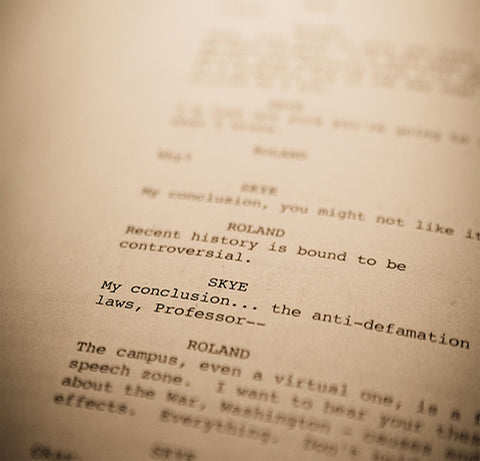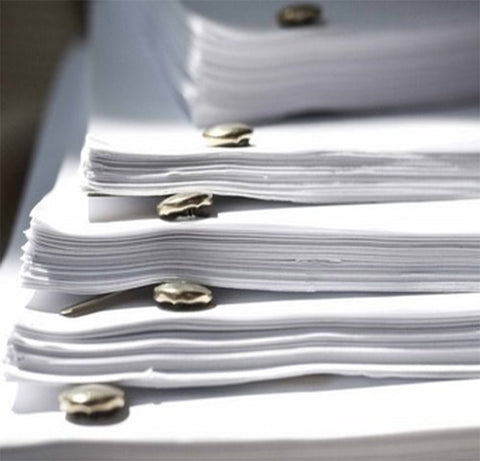
The Trap of Pilots: Setup vs. Template
Far and away the most consistent note on pilot scripts we get here at ScriptArsenal is that the script is mostly setup, and does not function as a template or representative episode of the series. In other words, the “real show” starts on Episode 2, after the pilot sets up the world of the series, the scenario the protagonist finds themselves in, etc.
Often it can feel like a pilot simply doesn’t have enough page real estate to both establish the story and present to the reading audience what an average episode is going to look like. A great case study for how to do this can be found in the pilot of UNBREAKABLE KIMMY SCHMIDT.
That pilot gets from setup to average episode plot in five minutes. And it’s not like Kimmy has no backstory to get through. She has a complex history that bears major weight on her life in the bulk of the show.
But the show is about Kimmy’s misadventures trying to adjust to life in New York City. So THAT plot MUST be the primary focus of the pilot episode, for it to act as a representative example of the series.
Let’s examine how Tina Fey and Robert Carlock blaze through their setup. Kimmy and the other “Mole women” are imprisoned in their bomb shelter. Forty-five seconds into the episode (so less than one script page), the SWAT team busts into the bomb shelter to free Kimmy and the other Mole women.
The pilot moves into a news montage, which gradually transitions to an interview show Kimmy and the Mole women appear on. The women conclude their interview, with a pre-scandal Matt Lauer asking them what they plan to do now. Kimmy doesn’t have an answer.
Once the interview is over, the women leave in a van, and Kimmy gets out, determined to stay in New York. One of the other women gives Kimmy her “Mole fund” money. The van leaves, and Kimmy’s alone in New York. She breaks out into a big smile, and the show really starts at that point.
Five minutes, or approximately five pages of script, burn through the entire setup and start the series. The trap writers sometimes fall into is thinking the setup needs to last an entire act, or several acts, or even the entirety of the pilot episode. Blaze through your setup as fast as possible, and your pilot can serve its purpose as a sales tool that demonstrates to potential buyers what an average episode of the show will be like.
How do you approach writing pilots?
Often it can feel like a pilot simply doesn’t have enough page real estate to both establish the story and present to the reading audience what an average episode is going to look like. A great case study for how to do this can be found in the pilot of UNBREAKABLE KIMMY SCHMIDT.
That pilot gets from setup to average episode plot in five minutes. And it’s not like Kimmy has no backstory to get through. She has a complex history that bears major weight on her life in the bulk of the show.
But the show is about Kimmy’s misadventures trying to adjust to life in New York City. So THAT plot MUST be the primary focus of the pilot episode, for it to act as a representative example of the series.
Let’s examine how Tina Fey and Robert Carlock blaze through their setup. Kimmy and the other “Mole women” are imprisoned in their bomb shelter. Forty-five seconds into the episode (so less than one script page), the SWAT team busts into the bomb shelter to free Kimmy and the other Mole women.
The pilot moves into a news montage, which gradually transitions to an interview show Kimmy and the Mole women appear on. The women conclude their interview, with a pre-scandal Matt Lauer asking them what they plan to do now. Kimmy doesn’t have an answer.
Once the interview is over, the women leave in a van, and Kimmy gets out, determined to stay in New York. One of the other women gives Kimmy her “Mole fund” money. The van leaves, and Kimmy’s alone in New York. She breaks out into a big smile, and the show really starts at that point.
Five minutes, or approximately five pages of script, burn through the entire setup and start the series. The trap writers sometimes fall into is thinking the setup needs to last an entire act, or several acts, or even the entirety of the pilot episode. Blaze through your setup as fast as possible, and your pilot can serve its purpose as a sales tool that demonstrates to potential buyers what an average episode of the show will be like.
How do you approach writing pilots?




